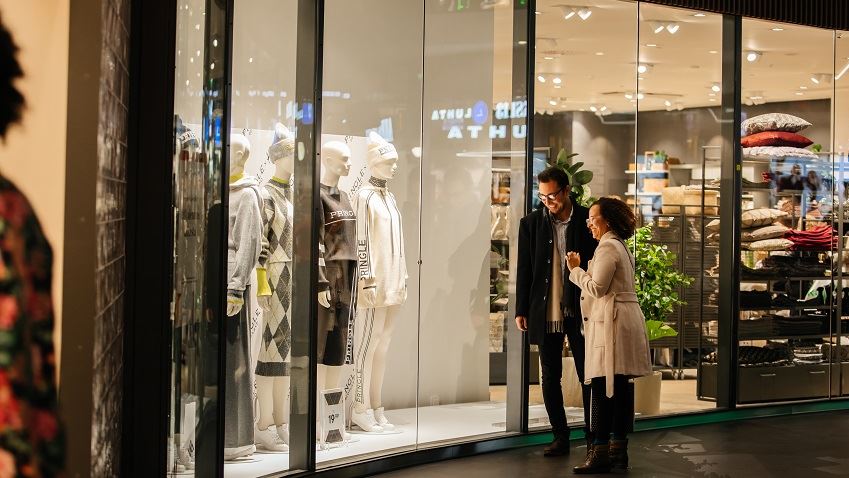Finding the right direction for business development by co-creating with stakeholders
- Retail
- Retail Industry Insights
- 5/23/2017
Digitalisation is the key to knowing your customer
Retailers can’t exist without customers. In the future, understanding your customers and catering for them as individuals will be more important than ever. Only the shopkeepers who bravely make use of digitalisation will survive this challenge.

Webstores, applications, social media accounts... digitalisation covers so many things. A regular consumer can see digitalisation, for instance, as e-commerce sites where the consumer can buy and compare products.
However, digitalisation is and will be so much more than that. It has also been recognised in the trade sector as a force for change. Is it a threat or an opportunity—it depends on the industry.
"When we are discussing digitalisation in retail trade, it’s crucial that the company knows its customers," says Antti Saarinen, Senior Manager of Digital Consulting at PwC Finland.
When a customer visits the different channels of a shop, either digital or physical, customer data is created.
"What type of a customer this is, his or her preferences as a consumer, how she or he acts and what she or he values," says Saarinen.
The shop must be able to use this data to create an overall image of the customer. Then the image can be used to develop its selection and ways of operating.
World of webstores
According to Saarinen, the different segments in retail have different attitudes towards digitalisation. In Finland, the current competition between large grocery stores is the reason why they are mostly using digital tools to make basic retail services more efficient instead of focusing on digital sales. Even though digitalisation has been identified as a trend, for instance food webstores don’t yet play a large part in retail industry business. However, growth can be detected: for instance, retailers in the UK have managed to make profitable business out of online food sales.
On the other hand, shops selling leisure and entertainment products, such as books, music and video games, are already mostly online.
"Up to 60% of this business is online on a global scale. From the perspective of Finnish players, the competitive situation is challenging," says Saarinen.
Mobile and social media are booming
In the future, people will more and more often use their mobile devices to make purchases. Mobile has already surpassed tablet as the preferred shopping device. However, Saarinen reminds us that all the same rules apply to mobile that do to physical trade: the most important thing is to solve how to get the customer to use the shop’s own application and to buy as much as possible.
"Nowadays people have at least tens of applications in their phones. The competition over consumers’ time is tough. In addition to apps, we recommend investing into a mobile friendly website," says Saarinen.
The downside of applications is the trouble of updating: the shopkeeper can never know if customers are using the latest version.
The role of social media cannot be forgotten — quite the contrary. It’s one channel for meeting your customers where people spend a lot of time on a daily basis. Especially the role of loyal customers is highlighted as they spread the message in social media. People also look for additional information and recommendations on products and shops from social media.
Personalised products and services — in a reliable way
In addition to mobile, Saarinen mentions highlighting personality and individuality as a clear, growing trend. Taking the consumer into account as an individual must be visible in communications, products, prices, service as well as in creating experiences.
"How would you like a shop window that reacted to your presence by offering only products that you might like?"
When shops get more detailed data of their customers, privacy issues are also raised. Developing technology makes it possible to carry out things that are not obvious from the perspective of privacy protection. Saarinen feels that trust and security are the keys to success in today’s retail industry. The consumer must be able to trust that his or her information will not be misused.
"I have a gut feeling that healthy skepticism and critical thinking have increased. At least I have noticed that these issues are raised more often with customers and my own friends as well as in media."
Physical environment is a shopping centre’s competitive edge
How do shopping centres survive in the era of digitalisation? Pretty well, in fact, as shopping centres can compete for the most valuable customers by making use of their physical environment. For instance, guaranteed fast deliveries are things that can win over many customers. Even e-commerce giants, such as Amazon and Zalando, cannot compete with these. However, a home delivery within 24 hours from the time of order is not an easy promise to keep – to solve the puzzle, the retailer has to figure out how ensure an efficient delivery chain.
How could a shopping centre, like Mall of Tripla currently under construction in Pasila, make use of digitalisation? Saarinen has an idea.
"People want quick, easy and effortless ways of shopping. What if we developed a delivery service that would bring the shopping to the people waiting for their train at the platform—or even all the way to the train. Location identifier would tell the shopkeeper in which train the customer is and where he or she is seated."
According to Saarinen, the technological preconditions for a smart delivery service already exist but there are open issues: is there a cost-efficient way of realising this? In what kind of a vision do the trade industry actors believe? Are the customers ready?
"If you want to win this game, you must give your customers the same kind of a service experience, no matter what the channel. That is why customer insight is the foundation for everything," Saarinen says.
You might also be interested in this story:



